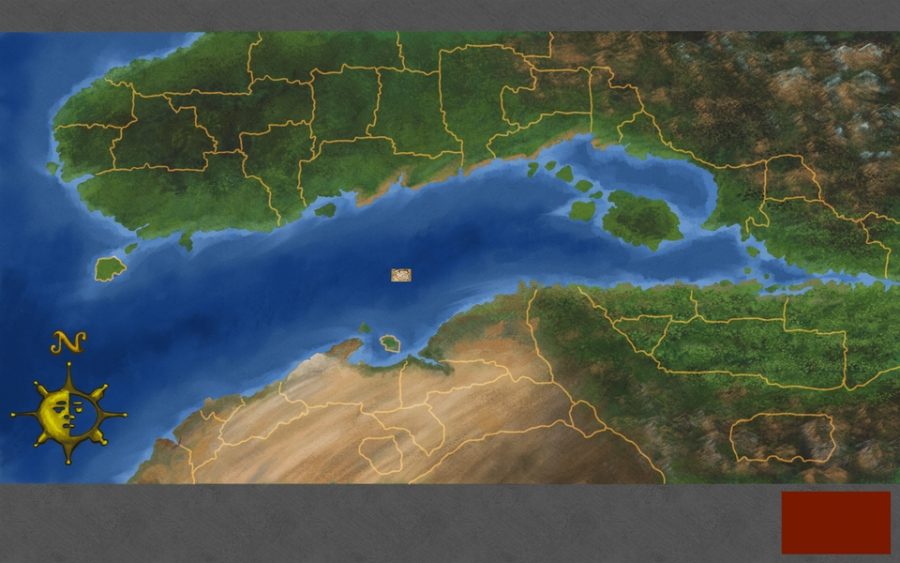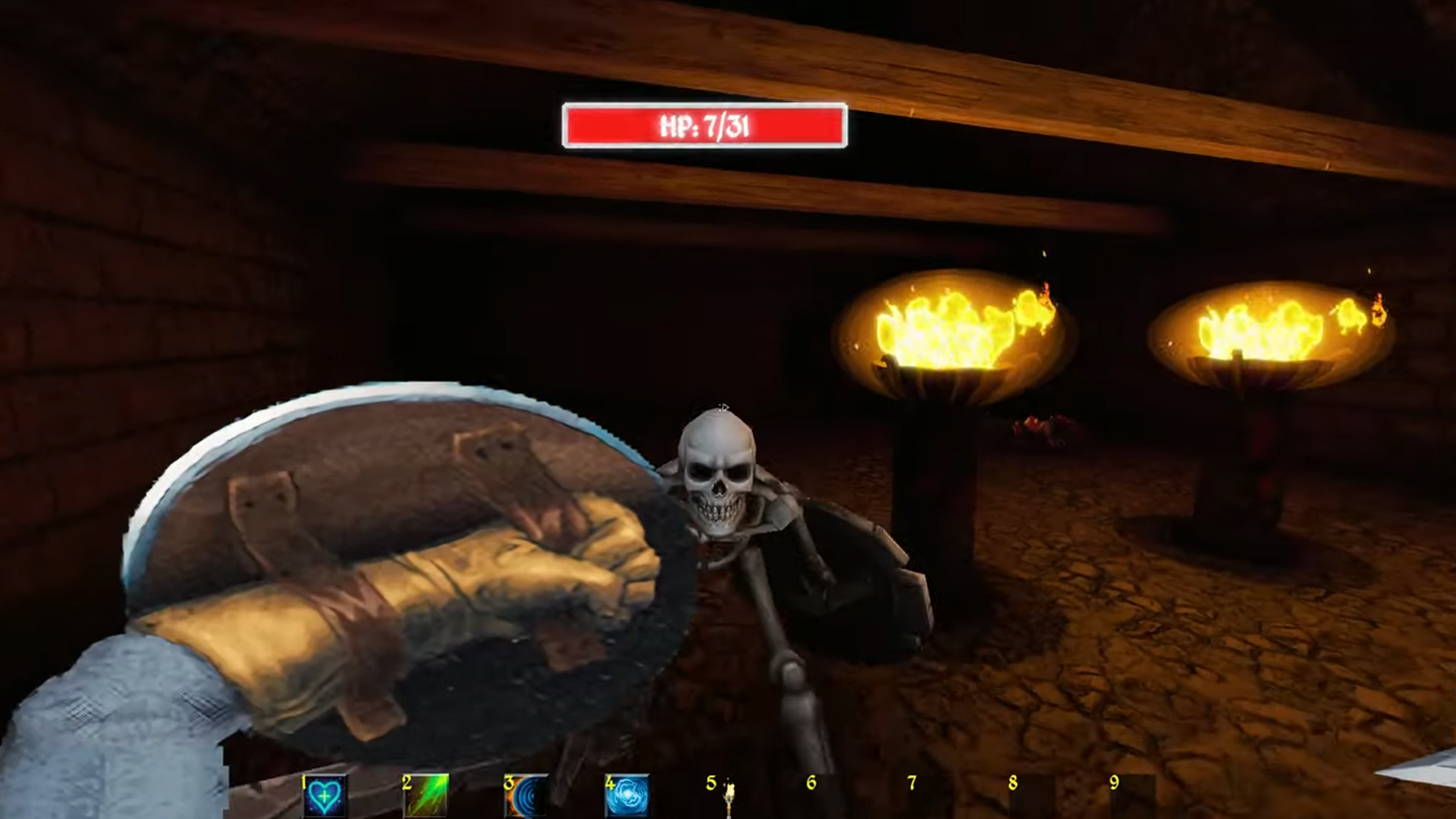The Elder Scrolls series of video games have become a household name because of its latter entries – the super-popular Skyrim, and Oblivion before it.
But prior to Oblivion, you enter territory where much fewer gamers have tread.
Morrowind, the third Elder Scrolls game, is often spoken about with reverence. Bethesda’s first open-world triumph. Among the best games ever made, and the bedrock on which they catapulted to their now massive success.
But compared to Skyrim and even Oblivion, few have dabbled into the realm of Morrowind. Some are put off by the stilted graphics (it was released in 2002 after all), others by its hardcore RPG system that is based on Bethesda’s own twist to the Dungeons and Dragons rulebook.
If you’re looking for Skyrim’s frenetic gameplay and ceaseless hand-holding, Morrowind will be a culture shock of note.
Even deeper into the rabbit hole, we find The Elder Scrolls 2: Daggerfall which was released in 1996, the same year as Duke Nukem 3D. Daggerfall is often hailed as the best game Bethesda ever made by withered, dry, husk-like boomer-gamers.
I first dipped my toes into this title in 2021. Having played hundreds of hours of Skyrim, Oblivion and Morrowind, each, I was desperate for a new Elder Scrolls experience.
Bethesda announced they are working on the 6th edition of the series, but that it would only come out in a few years’ time, and only after the company had moved on from its efforts with Starfield.
I yearned for an open-world RPG, but what I saw from the few gameplay videos that exist of Daggerfall was the game as it was at release. A pixel-warped, jankfest that would not fly in the 2020s.
See how the game originally looked in the video below:
It was slow and awkward and desperately, utterly aged. But somehow a small community had maintained itself around the game and I soon realised why.
Daggerfall, although released in 1996, is Bethesda’s largest open-world ever. In fact, it is probably one of the largest virtual sandboxes in gaming. The game’s world, the regions of the Illiac Bay (High Rock and Hammerfell) are approximately 161 600 kilometres if converted to real-world size.
For comparison, the isle of Great Britain is 209 000 kilometres large. Bethesda was able to create this enormous world thanks to procedural generation (yes Daggerfall is a roguelike, who would have thunk it.)

Daggerfall is set in the same world as Skyrim, so you begin the game by creating a character and choosing familiar races, namely: Dark Elf, High Elf, Wood Elf, Argonian, Khajiit, Nord and Redguard. Imperials and Orcs are not playable this early into the series.
Orcs do feature as enemies in the game though and are very important for the game’s storyline. One of the branching paths have you doing quests for the King of Orsinium.
Character creation is very in-depth. Much more than the latter Elder Scrolls games. You roll stats and choose a backstory, and the game moulds itself to your playstyle.
It is a sandbox RPG, where you basically get to choose your own paths. You do have a quest log, and you are given quests from storyline characters and organisations such as the Fighter’s Guild, Mages Guild and the Dark Brotherhood.
It’s fascinating how much the Elder Scrolls formula was already present, even as far back as 1996.
You can freely explore every square inch of the map, and every dungeon, cave, fortress, city, town and castle therein. Some will have treasures. Others will have dangers beyond your current power level.
This all sounded great to me. An endless, sandbox RPG experience, set within a world and lore that I already cared about. But there was just one problem… it felt terrible to play.
Luckily, passionate Australian Daggerfall fan Gavin Clayton decided one day that more people should be able to experience his beloved game, and he used the world’s most malleable game engine to bring The Elders Scrolls 2 into the modern world.
Daggerfall Unity is a complete port of the base game into the Unity Engine. The port is still in active development, but the beta is feature-complete. This means that every single thing in the base game has been ported to the modern engine. I don’t know how exactly this was done, but I imagine the Deep Magicks were summoned to aid here.
The first version of the port released in 2021, and brought a whole host of improvements to the game. Including fixes with its framerate, better controls, an enormous amount of quality-of-life features, swathes of bug fixes, graphical improvements and, most importantly, the ability to mod the game.
Now, at last, with Daggerfall Unity and the great modding community at the Daggerfall Unity Nexus, The Elder Scrolls 2 has been revived, resurrected, rearmoured, repainted, reborn and it is glorious. Watch the video above to see Daggerfall, I have to stress again that it came out in 1996, at its full potential.
Modding the game is easy. You just need to know where the right folders are and do some copying and pasting. There are also tonnes of handy modding guides about – I recommend this one from YouTuber GamerZakh.
If you really want to try another Bethesda open-world adventure, one even bigger than Skyrim, then try out Daggerfall. The best part is, it’s completely free to play and barely requires high-end hardware to run.
CD Projekt’s Good Old Games has a “Daggerfall GoG Cut” which is the base game with preinstalled mods so you don’t even have to do any modding yourself. I recommend starting with this and then expanding your mod list as you become more comfortable.
I have a few hundred hours in Daggerfall Unity so far. Once you get into it, it has that same Bethesda magic that Skyrim, Oblivion and Morrowind have. The kind of gameplay you go to bed thinking about and wake up craving.

